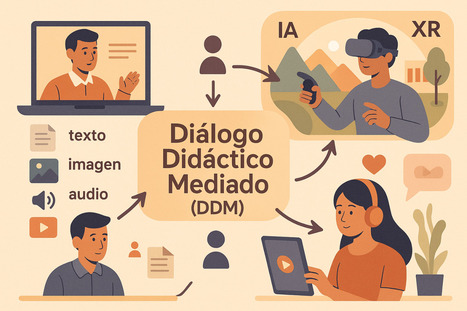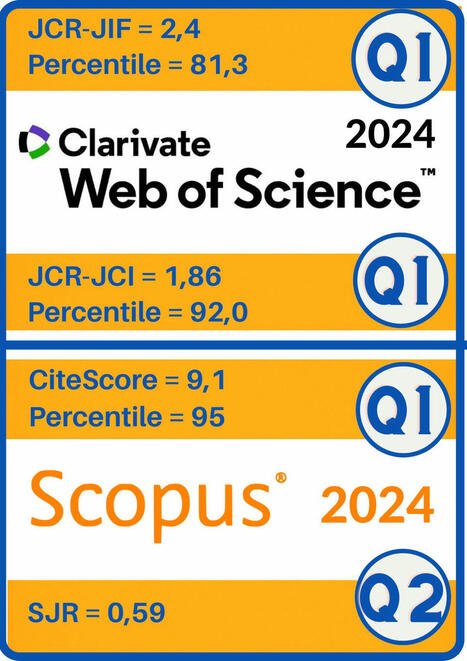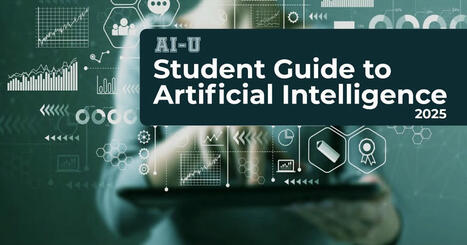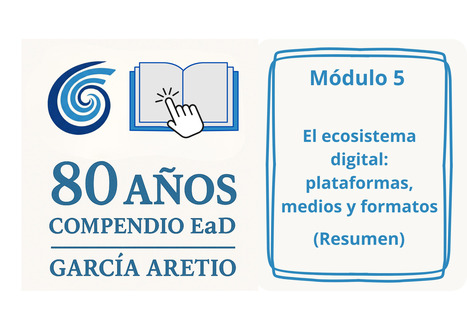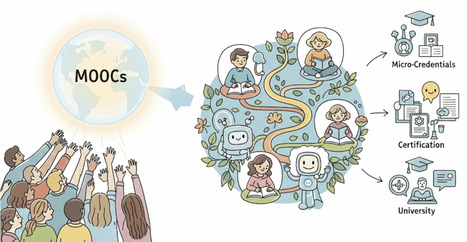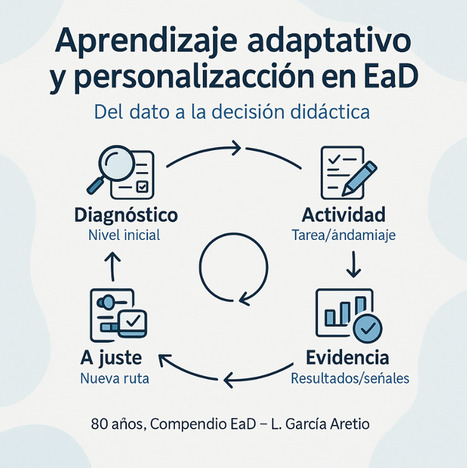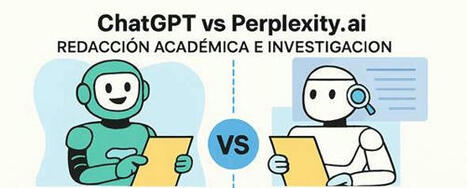Home Strategies, planning and management administrative software systems Book Review: Mega-Universities and Opening Education by Design Strategies, planning and managementadministrative software systemsnational, regional and international strategiesAfricaBibliographychange managementcurrent state of the artdesign of virtual learning organizationsGeneraldistant... educationEventsgovernanceIndiaIndonesiainnovationleadershipMonthly FeaturePakistanplanning, policies and management - institutionalpost-secondary distance educationpublicationsSouth AfricaTurkeyUnited States of AmericaUSA Nichols, M. (ed.) 2025 Mega-Universities and Opening Education by Design ICDE, Oslo, Norway Preliminaries I haven’t been posting much recently, reflecting my fully retired status. However, this book is definitely worth reviewing, so here goes. Open and distance learning, 30 years on Mark Nichols, the current President of the International Council for Open and Distance Education and Executive Director, Learning Design and Development at the Open Polytechnic of New Zealand, has pulled together as editor 17 articles about mega-universities (defined as institutions with over 100,000 annual student enrolments) and their relationship to open and distance learning. I spend a good deal of space describing the contents of the book. If you prefer, you can go straight to ‘My response to the book‘ by scrolling down to the end of this blog post. Introductions to the book Nichol’s book is a kind of update to John Daniel’s 1996 book: Mega-universities and knowledge media: technology strategies for higher education. John Daniel himself writes a thoughtful foreword for Mark Nichol’s book, reflecting on the major changes that have occurred over the 30 years since the publication of Daniel’s book. Daniel muses on the impact of mega-universities on campus universities the potential impact of AI on mega-universities the evolving economics of mega-universities He concludes that Nichol’s book addresses the following question: Can mega-universities continue to add new dimensions to the notion of openness and bring higher education to all who might benefit from it without compromising the economies of scale that are their unique advantage? Nichols points out that there are now at least 32 institutions that can be classified as ‘mega’ (with annual enrolments of over 100,000), and indeed a few, such as the Open University of China, can even be considered ‘giga’ (over 1 million enrolled students per year). Nichols concludes: it is telling that not all modern mega-universities have their roots in open, flexible, and distance learning (OFDL). The chapter by Paul LeBlanc shows how any university can become ‘mega’ right from where it starts, with the right vision, dedication to change, and dogged pursuit of a learner- and learning-friendly design. This should give all current open universities pause. Becoming ‘mega’ is not the sole privilege of those with a classic OFDL heritage. What is in the book? This book is divided into three sections: Section 1 This section explores the role and nature of mega-universities, while also exploring their context. Aras Bozkurt of the Anadolu University, Türkiye, presents an analysis of the impact of the Covid-19 pandemic on open and mega-universities, particularly emphasising the importance of empathy, collaboration, and shared humanity, which positioned open universities as central to educational resilience and transformation. He argues that open universities were significantly better positioned for the abrupt shift to remote instruction during the pandemic, largely due to their pre-existing infrastructures and pedagogical frameworks. Mpine Makoe and Ramashego Shila Mphahlele describes how the mega-university UNISA attempts to bridge the digital divide for its students, using digital divide and social justice frameworks including peer-to-peer student communication via WhatsApp. I was interested that UNISA has collaborated with telecommunication companies to provide zero-rated data access for students and regional access centres. Tian Belawati of Universitas Terbuka, Indonesia discusses both the benefits and challenges of mega-universities: Mir et al (Pakistan OU) Mega-universities face critical technical infrastructure challenges, including the need for scalable, robust digital platforms, reliable connectivity, and sustainable solutions to support massive student populations and complex educational operations. For instance a Learning Management System is made available for over one million students at Allama Iqbal Open University (the AIOU), with 600,000 students per semester. Once again the challenges are clearly described, and concrete suggestions for managing the challenge of serving very large numbers of students at the same time are given. Section 2 This section looks at the necessary or possible strategies for mega-universities. Although in the least developed countries and in a number of other lower income countries, demand for higher education far exceeds supply, re-thinking their strategic role is an existential question for many open or mega-universities, since for many, their enrolments are actually declining, due to increased competition from conventional institutions going online and from a rapid expansion of traditional higher education institutions widening general access. Thus the relevance of a mega-university very much depends on the stage of economic development in their nation. Sanjaya Mishra, Commonwealth of Learning After an analysis of the key features of mega-universities and the rationale in the past for their establishment, Mishra forecasts the following future development of mega-universities: multi-modal operation fully open access (anyone, anywhere) open curricula, tailored to individual needs technology-mediated with human support He concludes with a vision for how a mega-university will be operating in 2045. Don Olcott, Jr. Olcott argues that mega-universities need to constantly re-set their strategies as the world changes around them. He argues that the most problematic issue facing mega-universities and, by extension, open universities, may be mission ambiguity and confusion, due to the rapidly shifting landscape and educational ecosystem since the mid-1990s. A lack of clear, clean definitions of what constitutes a ‘mega-university’ and an ‘open university’ leaves potential students, and key stakeholders, confused about their mission and purpose. Strategic Reset is a conceptual process which mega- and open university leaders can apply to revise their future direction, vision, and mission. The starting point is for leaders to decide the version of the mega- or open university model they want to pursue. Olcott then suggests six possible strategic options for future mega-and open universities to illustrate strategic re-set. Ross Paul In his chapter on institutional leadership Paul attempts to answer the following question: To what extent can, or should, leaders of established conventional universities reform their institutions through deliberate design at a time of major upheaval? What can conventional university leaders learn from the examples of the mega-universities as they seek competitive advantage in more volatile markets? Paul emphasises the importance of effective leadership in such challenging times. In particular, university leaders need to find ways for their institutions to respond to digital technology and new models of teaching and learning that result, and also at strategic positioning and institutional design, through differentiation and cost-effectiveness. He then provides a list of nine strategic questions to be answered by institutional leaders. Stephen Murgatroyd Murgatroyd conducted a review of the strategic plans of 40 of the mega and open universities worldwide. He argues that the external environment of the higher education sector is undergoing on-going and significant change. However, mega-universities by their nature are slow-moving and difficult to change. This lack of agility in mega-universities is proving to be a severe constraint. When faced with new change dynamics, larger institutions often struggle to respond at speed and with innovation. Murgatroyd then sets out six common possible responses to these challenges and four possible scenarios for the future for mega-universities. He goes on to describe four challenges for the leadership of mega-universities and looks at lessons for mega-universities from the Covid-19 pandemic. All of this requires courageous leadership. Mark Nichols Nichols points out that the traditional values and mission of open and distance education are no longer the sole domain of open or distance universities as understood 30 years ago and that any university, regardless of heritage, is now able to design education models that mirror those of traditional open universities and gain ‘mega-university’ status. Nichols argues though that although mega-universities need not have an open university heritage, that does not make the concept of ‘open’ irrelevant. He argues that four facets of openness – availability, inclusivity, scalability, and sustainability – are still pre-requisites for any successful mega-university. He then goes on to outline in more detail these four facets and why they are important for any mega-university. He then provides matrices from both institutional and student perspectives to indicate the level of open-ness of different strategies. Section 3 in this section two chapters from very different institutions telling very different stories provide complementary case-studies of two mega-universities. Paul LeBlanc tells the incredible story of Southern New Hampshire University (SNHU) and its journey, as the chapter is titled, ‘from small residential to mega-university.’ Next, Wang Qiming, President of the Open University of China, the world’s largest mega-university, reveals the potential of mega-universities to bring about ambitious change at a national level and how mega-university infrastructure might be applied to a nation’s ambition to provide lifelong learning. Concluding chapter This brings together some ideas related to developing education systems that assist universities become mega-universities and influence favourable conditions for designing available, inclusive, scalable, and sustainable education. Appendix This appendix seeks to identify all mega-universities as at mid-2025, and includes comments on the difficulties of comparison. Use of AI in the book Each chapter includes some GenAI-generated features. A QR code at the start of each chapter will take you to a Gemini-generated podcast-style summary of each episode. A ‘Copilot summary’ is also offered for each chapter; these are handy for ready access to the main ideas. My response to the book First, this is a very useful book in its own right. It provides a good overview of the world’s mega-universities, their challenges, and the strategies that might enable them to continue as successful institutions in a rapidly changing higher education environment. It will be particularly valuable for the leadership of such institutions, enabling them to compare their current operations and challenges to those of other successful institutions of a similar type, and to consider possible strategies and challenges that they have not previously considered. I really enjoyed reading the two case studies, in particular. The book will be particularly valuable to scholars of higher education. However, as with many books with chapters from multiple authors, I am left wondering as to who is the intended audience. In parts, it seemed to be preaching to the choir. For instance, I cannot believe that existing leaders of mega-universities are not aware of the challenges and possible strategies for the future set out in this book. Several chapters offer nothing new to those in open and distance learning. Will this book be read by those outside the ODDE community? Most importantly, what was lacking was the student voice: what is the learning experience in a mega-university? This to me is the most important question. How satisfied are students? What’s it like being a student in such a massive university? What is the perceived quality of the programs? What are the employment prospectives following graduation? What are the drop-out rates? Without such information it is impossible to determine whether or not mega-universities are a good thing overall, or even if a specific mega-university is successful. As Walter Perry said of the UKOU: ‘Do not judge us by our entrance requirements; judge us instead by the quality of our graduates.’ There is no inherent value in being open or mega. The failure to address the student experience means the book for me is sadly lacking. Lastly, PLEASE do not publish books about open and distance learning solely in pdf format. Few people will read this book starting at page 1 and ending at page 248. It should be published electronically, in Word Press or similar online format, with separate links to each chapter, which makes it easier to search and to go straight to the relevant chapter. We should be practising what we preach in distance education. About Tony Bates Dr. Tony Bates is the author of eleven books in the field of online learning and distance education. He has provided consulting services specializing in training in the planning and management of online learning and distance education, working with over 40 organizations in 25 countries. Tony is a Research Associate with Contact North | Contact Nord, Ontario’s Distance Education & Training Network.






 Your new post is loading...
Your new post is loading...

